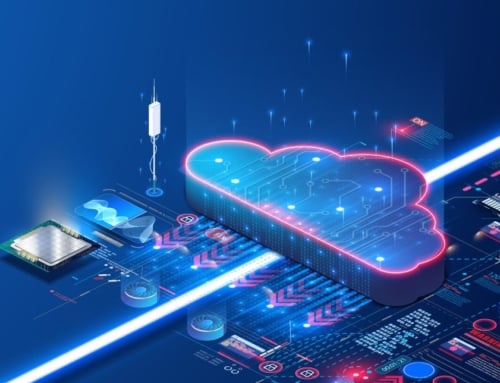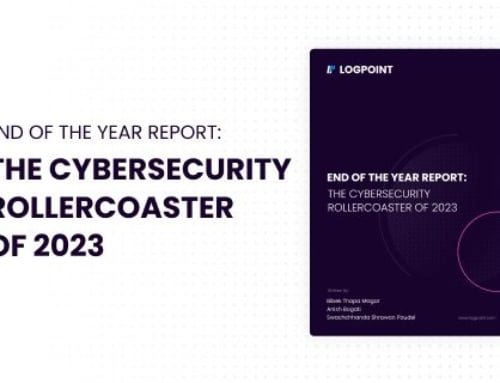Protecting your SAP environment is critical to sustainable business success. So how can we prevent cyberattacks on SAP systems? Such an attack can have a devastating impact on the operations of your business, leading to financial losses, supply chain issues, and long-term reputation damage.
To prevent that kind of headache, these systems need to be protected against internal and external cyber threats. That way your company can continue to maintain confidentiality, availability, and integrity.
Despite this, many organizations keep them out of scope for security teams or rely on the ERP vendor tools alone. As you might expect, this dramatically increases the risk of attacks and makes ERP systems, such as SAP, a prime target for adversaries.
Human error continues to be one of the biggest drivers of the success of a breach. Because SAP systems connect different departments and programs together to help you run your business smoothly, they are incredibly complicated. Since they are so complex and unique by nature, this makes it harder to develop proper cybersecurity measures.
And with cyberattackers attempting to attack systems every 39 seconds according to a study from the University of Maryland, protecting them is vital.
Cybercriminals actively target and exploit unsecured SAP systems with a deep knowledge of mission-critical applications. Various actors (the individual(s) behind the attempt) impose cyber threats like Malicious Insiders and Nation-State Hackers that use techniques such as Advanced Persistent Threats, Malware, Ransomware, Phishing, or Denial of Service.
Exploits can lead to complete loss of control of the SAP environment, enabling adversaries to access sensitive data, disrupt critical business processes and/or perform financial fraud activities.
What are the consequences of a successful cyberattack on your SAP systems?
As you can see so far, your SAP system is pretty vulnerable when left to fend for itself, yet we haven’t even taken any real steps to see exactly what can go wrong.
Manipulation of sensitive data
Suppose an attacker obtains access to sensitive data, such as banking information or supply chain data, and manipulates it. In that case, this can cause critical operational issues. For example, the non-payment of suppliers or the absence of necessary materials can disrupt manufacturing processes.
Modification of financial records
Modifying financial statements under the Sarbanes-Oxley Act can lead to a high loss of value on the stock market and reputational damage.
Your intellectual property in the public domain
Your intellectual property and sensitive data are your trade secrets and can be located in SAP systems. If you do not protect this data, you will risk exposing and losing them. Once the perpetrator releases this data to the public, you are no longer in control.
Why should you act now?
You have an insecure SAP system, sensitive data is easily manipulated, financial records are modified (needless to say, not in your favor), and your intellectual property is in the public domain. That’s a pretty bad day for any organization. But what’s the likelihood of any attempt taking place?
Cybercriminals are everywhere
Cybercriminals are everywhere and they do not all wear hoodies. The Verizon DBIR report 2022 states that 82% of breaches involve a human element (think social, error, or misuse) and 62% involve valid credentials. An external entity notified 65% of victims. These are the types of threats facing your SAP systems and operational excellence.
Most of your business-critical data reside in SAP systems
Approximately 77% of global transactional revenue passes through an SAP system. With complete visibility and transparency, you can identify what needs to be protected and where you need to adjust your security levels.
Protect your competitive advantage
Your business is all about your business purpose, responsibility, innovation, sustainability, and compliance. A cyberattack that compromises your data or intellectual property could cause you to lose market share and be at a competitive disadvantage to your rivals.
Reduce the risk to your business
Focus on a sustainable cybersecurity strategy that significantly minimizes business risk and enables rapid response and decision-making.
Use data-driven intelligence
Be proactive and use the data at your disposal to address current and emerging security threats against your business.
Summary
Attacks against business-critical applications such as SAP systems are on the rise. For example, according to Verizon there has been a 13% increase in Ransomware breaches—more than in the last 5 years combined. That alone is a pretty big indicator.
Your SAP infrastructure is at the heart of your digital infrastructure. Your intellectual property and – sensitive, personal, financial, processes, transaction and banking – data lives there.
That’s why your SAP systems are so attractive to cybercriminals. That’s why if left unprotected they are vulnerable. To lower the risk of an attack on your SAP infrastructure, monitoring these systems continuously and automatically is vital. With an intelligent security platform, you can detect threats to your SAP systems early and, thus, act proactively with appropriate countermeasures for security incidents. An interruption or an unavailable SAP infrastructure leads to immediate financial losses and manual efforts to restore the system. All it takes is one successful attack!







